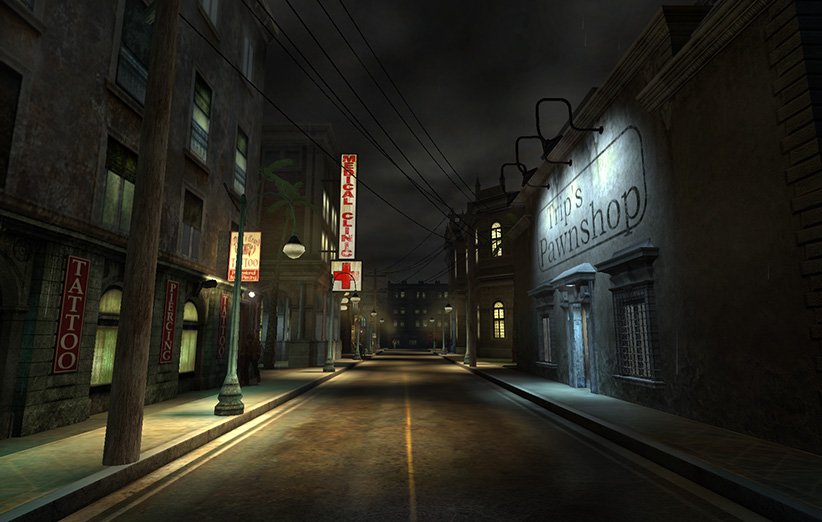If you’ve played Vampire the Masquerade: Bloodlines, you probably remember the Ocean House Hotel stage music. The music of this phase creates a sense of anticipation in you: waiting for something unfortunate to happen. This music alone shows the power of atmosphere or atmosphere.
But brewing is not that simple. To create a strong atmosphere, dozens of different factors must work together to create a strong whole. As good as this stage’s music is, it’s just one component of a larger whole.
Before I started writing this article, I decided to head over to Reddit and ask the members there what they liked about the game. I got a lot of different answers, but one thing that a lot of people mentioned was the atmosphere. This answer was expected; The atmosphere of the game is really special.
Each game environment has been designed with great attention to detail. Sounds, music pieces and visual effects all create spaces that you get a unique vibe immediately after being in them.
But what is interesting to me is how different the moods of these spaces and places are. Whatever the setting of the game – a haunted house, a night club or a guarantee company – the game manages to create the perfect atmosphere for that environment every time.
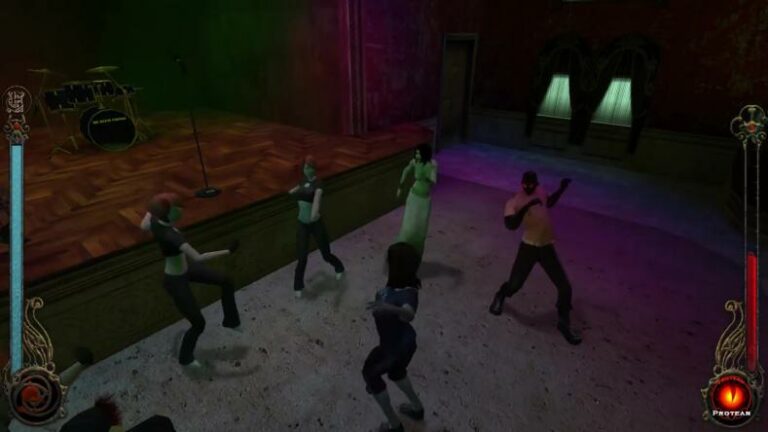
The question is, how did the game manage to do this? How do you create not just one great atmosphere, but dozens of different great atmospheres all located in the same world?
In a word, the answer is: contrast.
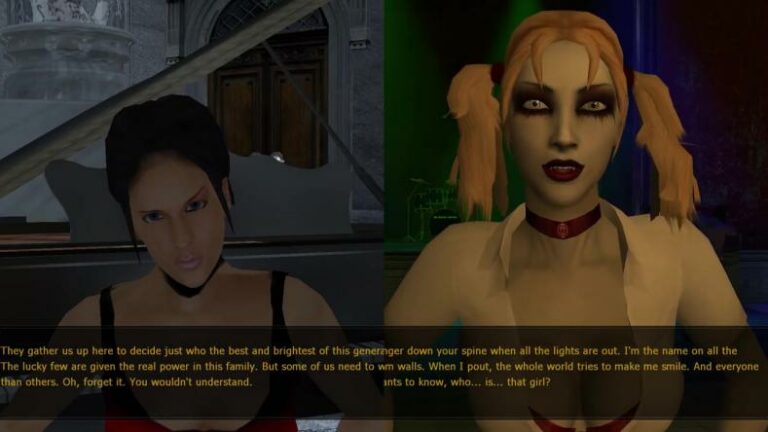
In its context, Bloodlines uses many different styles that are significantly different from each other, so each one stands out more independently. For example, game soundtracks include many styles:
- punk rock
- Night music with strong bass guitar
- Horror movie music
Sometimes there is no music and you are just listening to talk radio or just absolute silence.
But contrast is not just about juxtaposing several things that are different from each other. In contrast, the transition from one context to another is also important. Many of the game’s quests are designed to take the player through several environments with different atmospheres to create an emotional ups and downs. When these different moods are juxtaposed, the transition from one to the other acts like an emotional shock and makes the differences more prominent.
There are more different areas in Bloodlines than I can describe in one article. So I’m just going to cover three of my favorite areas in the first game area.
The Asylum Night Club
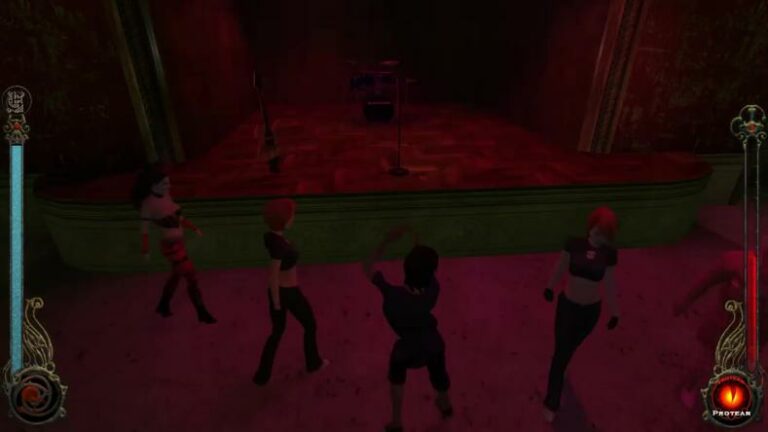
Kilpatrick’s Bail Bonds
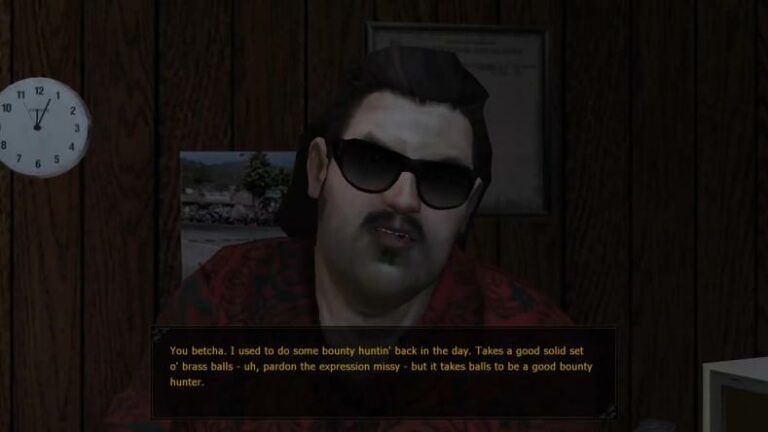
Ocean House Hotel
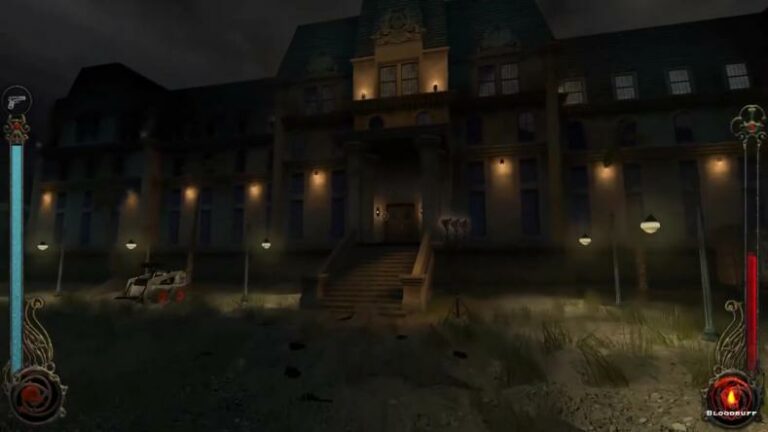
I chose these three places for two reasons. The first reason is that they are all very well-crafted locations that use several different elements to create a memorable experience. The second reason is that each one is very different from the other, and they show the wide range of moods of the game and their contrast with each other.
First, I’ll describe each one individually to show how well-built these places are on their own. Then I will show the contrast quality of the game by comparing their differences with each other.
Let’s start the discussion with Madhouse Nightclub.
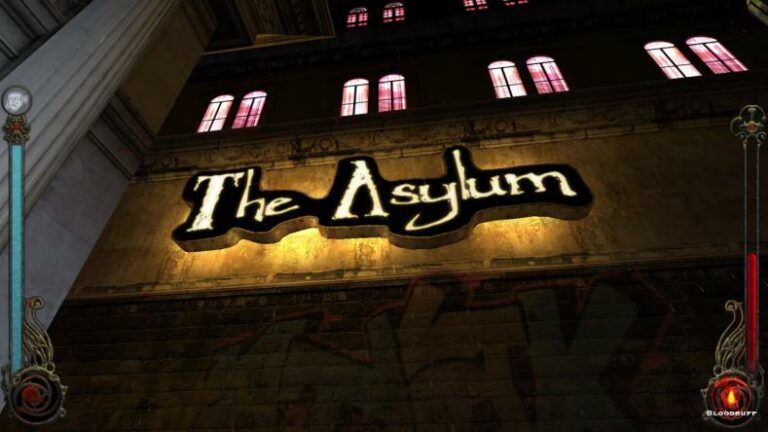
“Madhouse” is the best nightclub in Santa Monica, which is managed by two sisters named Therese & Jeanette Voerman. As soon as you enter the club, you will hear the punk music and see the walls filled with posters of the upcoming shows.
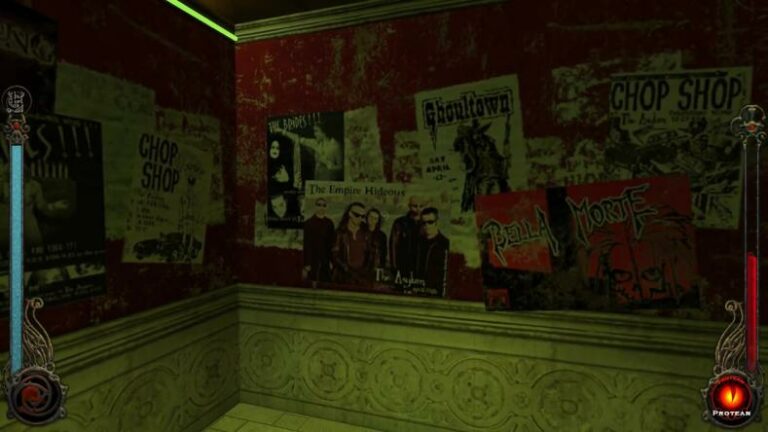
When you go further, you will see Janet seductively introducing herself and the club to you and going back to work.
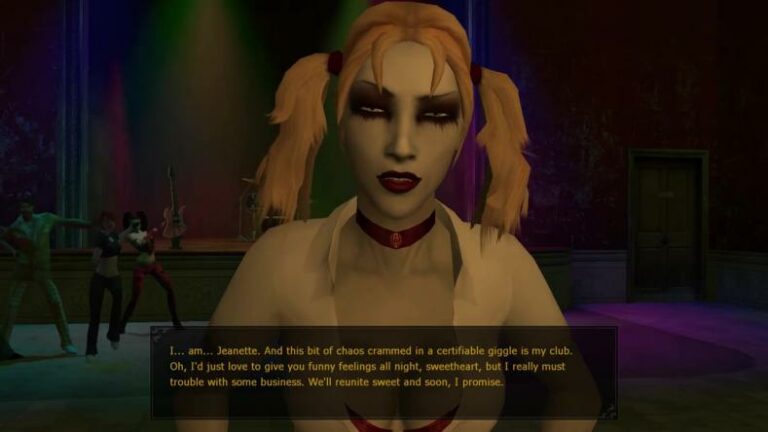
In the club you see people dancing and talk to out-of-towners who have come there in search of excitement. Everything indicates that there is a carefree party going on in this club where the audience has consumed drugs. Everyone is living to enjoy the moment and they don’t like to think about the consequences of their actions. The environment is loud and glamorous, and the music is playing at its loudest.
So far, the basic identity of the setting has been established, but Bloodlines continues to add subtle details and touches to the setting. These details are not designed to simply enhance the image of a crazy nightclub, but rather to express the feeling of each character to this crazy nightclub.
Sometimes these details work against the general mood of the environment. For example, unlike most people you see in the madhouse, the bartender is a serious and straightforward man. He’s not there to have fun, he’s just there to do his job.
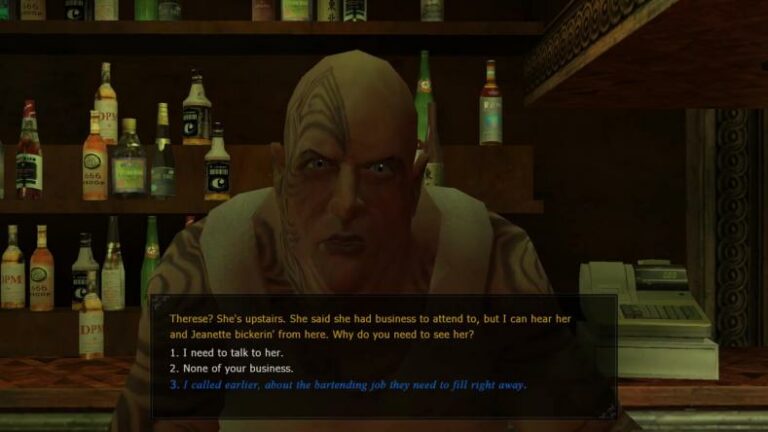
When you go upstairs, you’ll meet Tris, the second sister who runs the club. Unlike Gennett, club management for him is just a business and an investment to increase his influence.
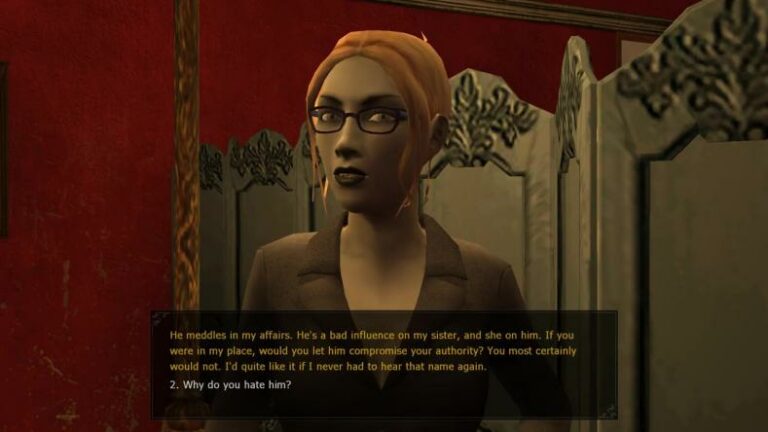
These details show how well the game developers have understood the nature of this environment. These details enrich the atmosphere of the game, as they are impurity. These impurities make it more believable.
Now let’s turn to the Kilpatrick Guarantee Company.
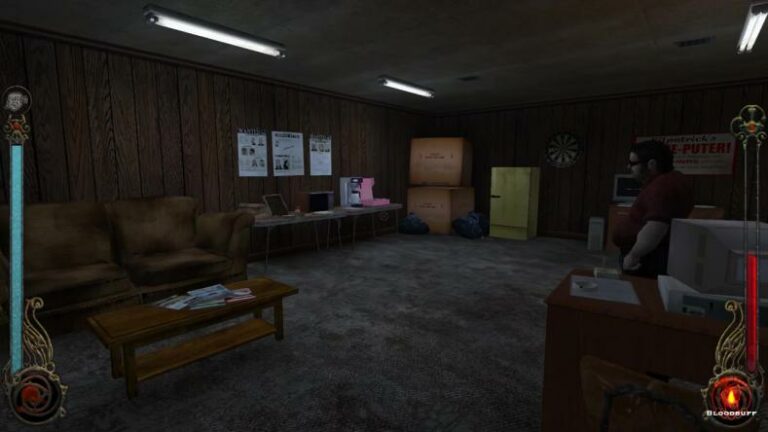
This guarantee company has the greatest possible difference from the madhouse night club. Kilpatrick’s Bail Office is a sloppily arranged office. From the looks of it, it is clear that it is prepared for long nights of boring work.
The moonlight lamps above the room are only functional, not decorative, and some junk is scattered around. Instead of playing music in this environment, you will hear the radio show Depth of Night in the background.
However, the authors have added a series of small details to this place to give more depth to its identity. For example, when you talk to Kilpatrick, he tells you about his business. He says he has hired a bunch of goons to go after people who don’t pay their debts on time. He refers to this very sarcastically and you realize that he is a very dangerous person.
When we place the night club next to the guarantee company, we see that Bloodlines has used two different styles and contexts to identify these two places. Almost every detail of the establishment is in direct contrast to the nightclub. As much as the nightclub is stylish and busy and energetic, the establishment is soulless and depressing. Sometimes the difference is so stark that it feels like you’re playing a different game, but each location is only a 60-second walk away from the other.
Finally, let’s take a look at Ocean House Hotel.
Unlike the previous two examples, this one is built to scare the audience right from the get-go. The purpose of this place is not to present a tangible place in front of the audience, but rather to attack the audience directly through surprise and suspense.
Of course, this does not mean that the game has no narrative coherence. Undoubtedly, it is not. But it is clear that Ocean House Hotel was made as one of the stages of horror style games, not a role playing style game.
When we enter the hotel grounds for the first time, we hear the same scary and humming music that was mentioned at the beginning of the article. This music is fundamentally different from what we have heard so far and conveys a sense of discomfort and distress to the audience.
As you approach the front door of the house, a light bulb pops loudly. The game shows you from this point that you should expect sudden scary moments.
When you enter the hotel, you experience such moments in abundance. From the chandeliers that shake airlessly to the stairs that collapse under your feet. Also in this stage you will encounter a lot of cursed objects that will directly damage you. For example, pots that fly through the air without warning and if they hit you, they will reduce a part of your health bar.
Of course, none of these items are very dangerous, and if your health bar isn’t low, you won’t be in danger of dying. But they deplete your health bar and force you to pause from time to time to restore your health bar.
This will automatically slow down your progress and force you to experience the stage with a slow beat, even if you prefer to finish fast. This means there are enough gaps between scary moments to keep you in suspense.
The Ocean House Hotel stage does a great job of incorporating elements of true horror into its setting. At this stage, we see mechanisms that we don’t really expect to see in role-playing games.
The game is aware that, despite being a role-playing game at its core, it can still borrow ideas from other genres. In this sense, when you compare the Ocean House Hotel to other locations in the game, it feels really special.
So far we have shown how Bloodlines:
- By using contrast, it creates diverse and attractive atmospheres
- It creates diverse environments by using visual styles, environmental layout and different mechanisms
When we see the placement of these elements together, the final result looks very dramatic.
But now that we have a proper understanding of these environments, the question is, what does the game do to bring out their true potential?
Yes, there is value in having a few different environments to increase the variety of the game, but good game developers know that more can be done to increase the impact of these environments. One of the things that Bloodlines has done in this field is to design the game quests in such a way that they complement these environments and their diversity. Let’s focus on these quests and see how they interact with the game environments.
Bloodlines quests are short and independent narrative lines that involve you in adventures in the game world. During each of these quests, you move between several different environments, each of which adds more richness to the story and changes its mood. This game is aware of the value of experiencing an “emotional journey” on the part of the player and uses its various environments to create tense, exciting and humorous moments.
The game also uses transitions between different environments to create a heavy dramatic effect. Simply transitioning from one environment to another can create a huge change in mood, and this change keeps the adventure fresh and unpredictable.
The reason Bloodlines quests are so engaging is because of the great environments. These quests make traveling from place to place an amazing experience, and you never know what’s behind the next door.
Let’s take a look at part of the main quest storyline to see how the game moves you between different points of the map to create an emotional experience.
I just have to give a warning: I’ve tried hard to avoid spoiling the game’s story up until this point, but I have to from here on out. If you are going to experience the game, you should know that continuing will spoil one of the main quests.
In the following, there is a risk of revealing the story
Okay, so the quest we’re going to look at is called The Ghost Haunts at Midnight. In this quest, the player must explore the Ocean House Hotel to contain a disturbing ghost.
This quest may not have as many transition moments (from one area to another) as some other quests, but each of these transitions are very powerful and play a prominent role in providing powerful emotional arcs for the player.
To start this quest, the player must go to the Madhouse Nightclub and talk to Tris. This means that the quest will only start when the player has completed the club discovery experience that we talked about earlier. At first, you overlook all the glitz and bustle of the club, until you’re sent to the bartender and then upstairs to meet the club manager.
After overhearing an argument between him and his sister, you explain your situation to him and he makes a deal with you: he’s willing to help you, but first you have to do something for him. He says that a ghost has taken over one of his properties and he needs you to retrieve an item to free the ghost.
The only way to get there is through the sewers. That’s why he gives you a key and sends you on your way. On your way out, you take one last look at the club’s energetic atmosphere before walking into and down a manhole.
I love this move because I think it represents Tris as a character. From the outside, he seems like a respectable and determined person, but when you get to know him a little, you realize how hard-hearted and hard-hearted he is. The mechanism of vampire society is the same. They look classy and attractive on the outside, but inside they are cold and disgusting.
The transition from the club to the sewer shows this duality through a quick and sudden change of tone. The game’s sewer environment – as expected – lacks any appeal. At best it’s soulless, and at worst it’s likely to transmit a disease.
The life of vampires may seem exciting at first, but when you get to know it closely, you will see that this life is mostly disgusting and ugly. But sewage is just the beginning of your problems. As soon as you enter the hotel grounds, your night takes a turn for the worse.
The discovery of the Ocean House Hotel is the high point of the quest, and the game does not fail in any way. As I mentioned, this area is full of mechanics borrowed directly from horror games, and the game uses these mechanics to create a scary and thrilling experience.
Also, these mechanisms have been used to create an emotional climax for the quest. The entire suspense of the quest ends at this moment, and the game carries this suspense with a very crazy climax.
But once you leave this haunted house behind, there’s another quick transition that neutralizes the sense of dread. After leaving the dark and deserted corridors, you enter a bright and comforting hotel room where you find the ghost’s personal item.
Changing the game’s tone from “scary” to “cheerful” lessens the tension, but doesn’t completely remove it, because you’re not sure exactly what’s going on. However, sooner or later you will realize that you have reached the end of the line and then you will return to the madhouse nightclub.
Returning to the club has a different feeling compared to before. You have been through a lot, but nothing has changed here. The music is still playing, the people are still dancing and the bartender is still sullen. This time you will realize how ignorant everyone is about Trace Foreman’s dark and secret dealings.
However, the club environment relaxes me. Everyone is enjoying life and you are happy to be away from the horror you experienced. When you go upstairs, you will see Janet, who will tell you that Tris has been out for a while, and the game will send you to your next adventure.
As you can see, atmospheres and game environments are a vital part of the overall game formula. The game has a large and varied color palette and uses a variety of techniques to create places that are shockingly different. The game then borrows from these diverse environments to tell a story within them and create memorable experiences using their diverse strengths.
Bloodlines does a lot of things right, but it owes much of its success to these environments. These environments are the basis of all other features that the game is built on and play a central role in raising the overall quality of the game experience.
Source: Gamedev Adventures YouTube channel
tales of arise walkthrough . How long does it take to beat Tales of Arise?
the forgotten city walkthrough . How long does it take to play The Forgotten City?
The release date of Sonic Frontiers has been announced; See its story trailer
